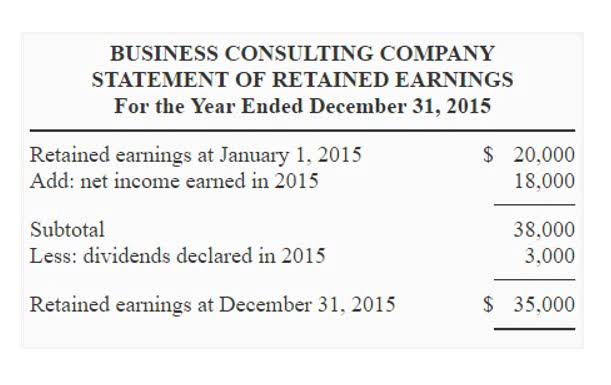
However, that may not always be the case, such as if a farm builds a berm to reduce runoff from a source of hazards into an agricultural water system. As another example, in response to comment 123, we explain that changing the water application method under § 112.45(b)(1)(iv) for root crops may not be an appropriate mitigation measure, as it may be difficult to effectively minimize contact between agricultural water and the harvestable portion of the crop. For comments related to outcomes, and the remainder of this section for comments related to corrective and mitigation measures.
K. Treatment of Agricultural Water
Comments also seek clarity as to when FDA would expect the testing to be completed (for example, before the season starts). Further, some comments question whether historical water testing data could be used for the purposes of an exemption from preparing an agricultural water assessment. Comments also request clarification on whether this exemption could be used for a farm that only uses pre-harvest water, but tests to the same standard as post-harvest water and meets all other relevant requirements. (Response 35) We recognize that not all farms (including, for example, new farms and those growing covered produce on land under short-term lease), will have a historic understanding of their agricultural water systems, including uses of adjacent and nearby lands.
FIFO vs. LIFO: Choose the Right Inventory Valuation Method
Comments did not provide information to suggest that revisions to this approach are necessary or appropriate. As such, we use the same approach to estimating the burden of information collection in this final rule as we did in the 2021 agricultural water proposed rule, with the only change being to update farm counts based on more recent data sources used in the FRIA compared to that used in the PRIA. For discussion related to the estimated time to conduct recordkeeping specifically, see comment which one of these would not be a factor in determining the reorder point? 143. The Food and Drug Administration is issuing a final rule to amend the agricultural water provisions of the produce safety regulation. This rule replaces the microbial criteria and testing requirements for pre-harvest agricultural water for covered produce (other than sprouts) with a regulatory approach that incorporates recent science and Food and Drug Administration outbreak investigation findings to achieve improved public health protections as compared to the earlier requirements.
What are the differences between Reorder Point and minimum stock level?
Reorder points are vital to keeping your business running smoothly, but they’ll only work if you’re prepared to reorder on time. Safety stock is similar to a reorder point, but it’s a surplus quantity to ensure you don’t run completely out of stock if there are delays. However, once you have a handle on the patterns of a product, you’re ready to start putting the variables together. Lightspeed POS makes managing your business easier with automatic low stock notifications and automated reordering. The last thing you want to do is forget to place an order when you reach your reorder point and not be able to meet customer demand.
- For example, changing from overhead to microjet irrigation for some tree fruit (such as citrus) or from microjet to drip irrigation for some covered produce that grows near the ground (such as bell peppers) may reduce the likelihood of contamination of the covered produce in accordance with § 112.45(b)(1)(iv).
- (Response 49) We recognize that some farms have pre-harvest agricultural water systems with water sources and/or distribution systems, such as irrigation canals or rivers, that span long distances or are impacted by land uses covering a wide area.
- Therefore, the farm would have to immediately discontinue that use of the water and take corrective measures under § 112.45(a) before resuming such use(s).
- We proposed to add two new definitions for “agricultural water assessment” and “agricultural water system” in § 112.3 to provide clarity for terminology used in the proposed requirements for pre-harvest agricultural water assessments.
- (Comment 116) Several comments assert that a time interval for in-field microbial die-off only makes sense if preceded by microbial water testing, which would allow farms to calculate an acceptable die-off interval rate that may differ from 4 days.
- For example, the comment asserts that management techniques such as prescribed grazing can result in less opportunity for contamination of water via runoff compared to CAFOs, since fecal matter is dispersed across a larger area of land where prescribed grazing occurs.
Which POS systems allow you to set reorder points for inventory?
Various action items have been identified as part of the CAN initiative, including fostering neighbor-to-neighbor interactions and conversations, and building a research roadmap to understand key landscape processes to guide decision-making both now and into the future (Ref. 39). Additionally, new information and scientific advancements will likely be incorporated https://www.bookstime.com/ into training programs and other education and outreach materials in order to increase awareness by farms. For example, we are aware that food safety trainings intended to be specific to certain commodities (or commodity groups) have been held, which could be a mechanism in the future by which information relevant to specific commodities will be shared.
(Comment 64) Several comments assert that the crop characteristics listed in the preamble of FDA’s proposed rule are not specific to water and therefore are outside the scope of the proposed rule. For instance, one comment asserts that crop characteristics contribute to risks related to cultivation, harvesting, packing, and holding practices as a whole and not to agricultural water in particular. The comment recommends that if FDA intends to retain crop characteristics as a factor in the final rule related to agricultural water, the Agency should explicitly state that consideration of crop characteristics is limited to how the characteristics relate to potential contamination from direct application of agricultural water. Further, we recognize that there may be some instances in which there is uncertainty as to what the time interval between last application of agricultural water and harvest will be.

E. 2022 Supplemental Proposed Rule
- Whether or not to test pre-harvest agricultural water or to implement mitigation measures under § 112.43(c)(4) is up to the discretion of the farm.
- (Comment 8) A few comments argue that the scope of the proposed rule is too narrow and FDA should include chemicals and biological toxins in the requirements for agricultural water assessments, since, the comments suggest, these agents pose a potential toxic disease risk to humans.
- Some comments suggest that treatment would be the only viable mitigation measure for some operations.
- Our responses to the comments include our reasons for determining whether to modify any of the proposed requirements.
- Further, we recognize the need to provide farms with education, outreach and technical assistance to facilitate compliance with the rule, and we intend to pursue various mechanisms, such as publishing guidance, holding webinars, and developing other educational resources, including working with other stakeholders (such as State agencies, educators, and extension agents), to do so.
- One comment opposes the land application of municipal wastewater sludge and industrial waste (for example, slaughterhouse sludge), suggesting that there should be restrictions for the use of such materials on crops and that land applications of those materials may serve as a source of contamination to water sources.
We received submissions from diverse members of the public, including produce farms; coalitions; trade organizations; academia; consumers; consumer groups; State and foreign government agencies; and other organizations. We held two virtual public meetings on February 14, 2022, and February 25, 2022, to solicit public comments on the proposed rule, inform the public about the rulemaking process (including how to submit comments, data, and other information to the rulemaking dockets), and respond to questions about the proposed rule. The public meetings were attended by domestic and foreign industry representatives, academia, State and Federal regulators, retailers, third-party certification bodies, laboratories, consumer groups and others, and included discussion panels consisting of representatives from industry, the States, consumer groups, and retailers. We also held a consultation with Federally recognized Indian tribes on February 4, 2022, to provide an overview of the proposed rule, answer questions, and receive feedback.
- We also considered that the produce farming community did not have the history of regulatory interaction with FDA and the same experience with food safety regulations as did the food manufacturing industry.
- (Comment 65) Several comments suggest that the inclusion of crop characteristics in agricultural water assessments will result in confusion, because, the comments claim, crop characteristics are only relevant to consider if an agricultural water source is already contaminated.
- It is possible that driving down the annual carrying cost of inventory can significantly alter the EOQ reorder point.
- (Comment 139) A few comments suggest that FDA and States will need time to make progress on partnerships related to the pre-harvest agricultural water provisions.
The reorder point formula is daily unit sales multiplied by delivery lead time, with some safety stock for good measure. For a quick rundown of reorder points and safety stock and their importance in inventory management, check out this short clip from our new podcast. Comments regarding other relevant factors, with the exception of those related to testing as part of an assessment under § 112.43(d), are discussed below. (Comment 43) Some comments seek clarity on whether the exemptions in proposed § 112.43(b) are permanent or temporary.
Trả lời